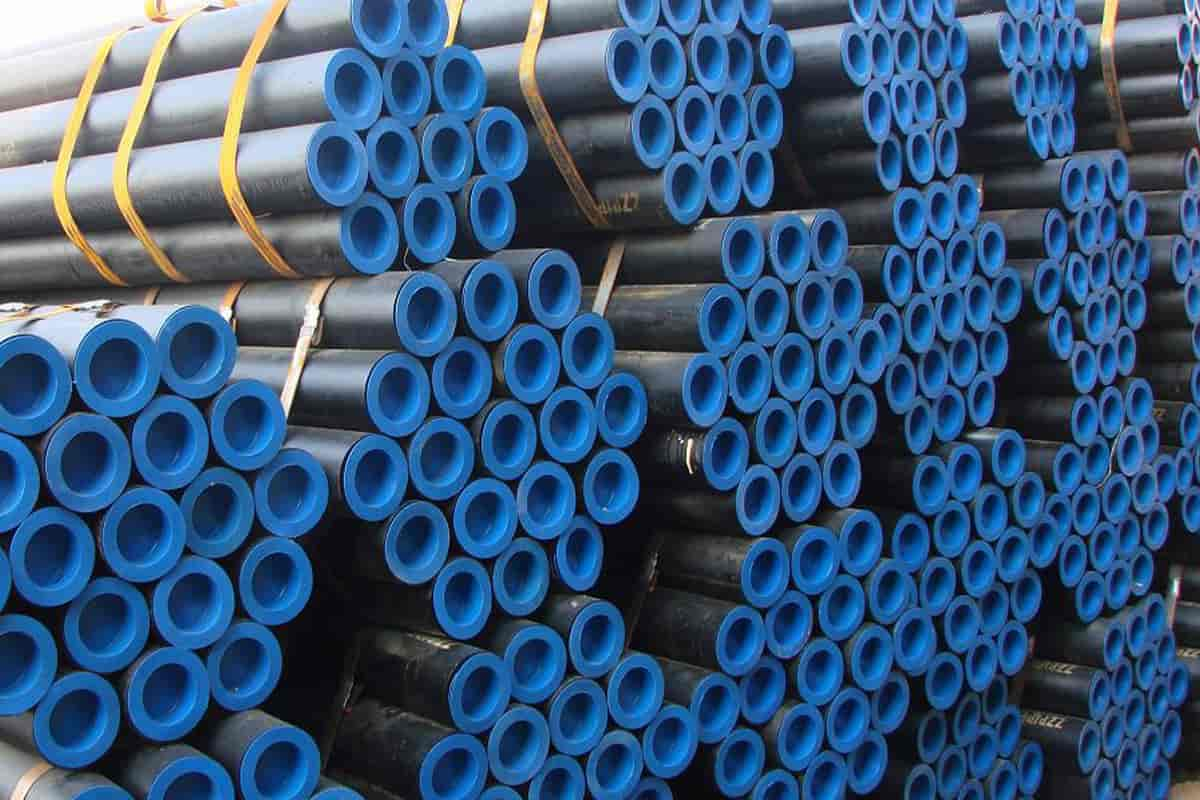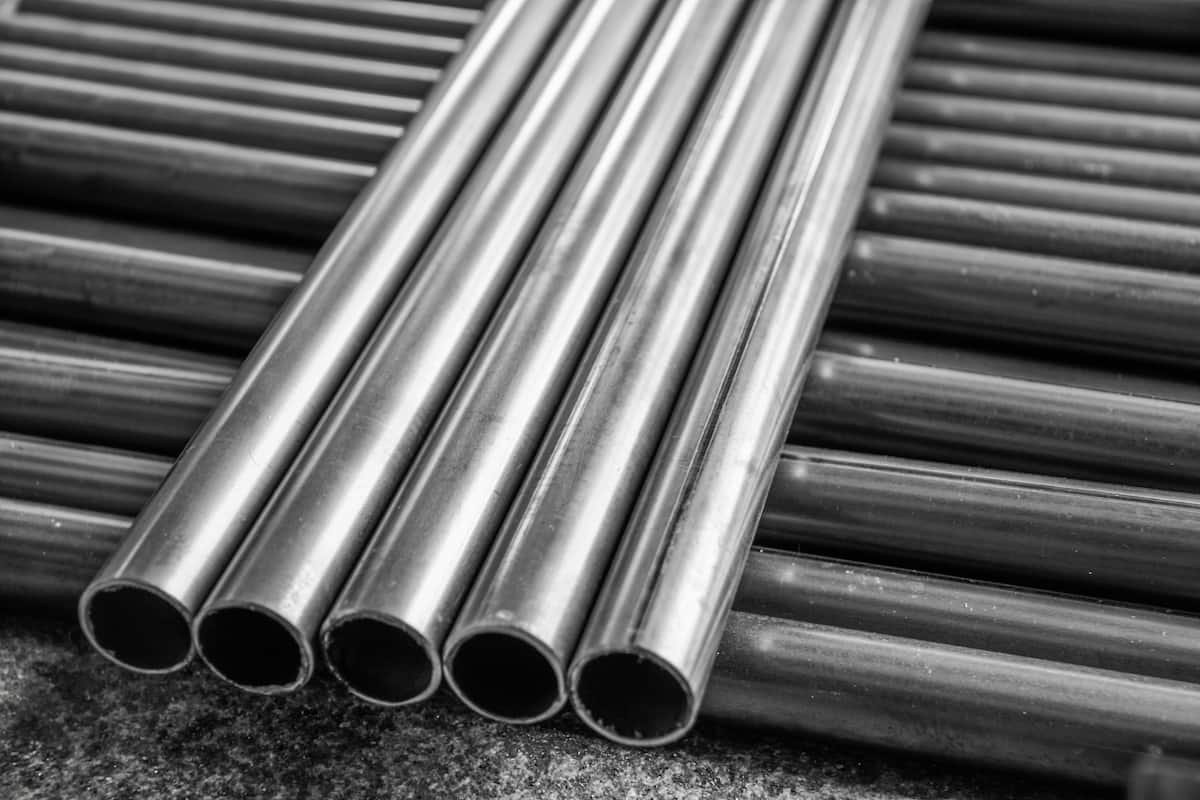As you can guess from its name, the API stainless steel tube is a seam-like steel pipe that is produced according to the standards of the American Petroleum Institute. A short API is used for the Institute name as the name of this type of pipeline. It is one of the oldest institutions to set standards for steel in the oil and gas industry as a whole.
Many countries, including Iran, use API standards to produce water, oil and gas pipelines. API tube is made of special alloy steel, which has less carbon content than conventional steel, and contains manganese and small amounts of other elements. The presence of these elements in the tube structure enhances the strength and resistance of API tubes and improves its mechanical properties.
What is the method of producing API pipe?
Since the API tube is a kind of slit tube, its manufacturing procedure is similar to another slit tube, i.e., the plate is first to cut into the strip of a specific width, and then using a roll forming machine, their edges are close to each other, finally these edges are solved.
The main difference between API gas tube production method and other seam tubes, alloy sheet and high thickness used in its construction is it very similar to 40-degree Mannesmann tube.
Of course, the applications of API tube are different from those of the Manseman tube and other types of gas tube. Here are some examples of using this tube.

What is the main use of API pipelines? The high strength of polymeric tubes can consider it as an appropriate alternative to high-quality Mannheim tubes in long pipelines and gas and reducing project costs. You can read about other uses of this pipeline below:
Low temperature and working pressure in oil, gas and petrochemical industries
Water in industry and home
Shipyards
industrial wastewater pipes
high pressure chemical transfer
Insulating high voltage cables
sour gas plant
What are the technical specifications of api pipeline?
Since the API tube can be made of different alloys, various types can have different mechanical and chemical properties. To understand these properties, it is better to first understand the different criteria for such a tube:
API Pipeline Standard
API tube is produced in both seamless and seamless shapes. Sometimes the meaning of the API tube is actually the API 5L tube, which is specifically produced for gas pipelines. For this reason, the API or API 5L tube is also known as gas tube. The standard API 5L tube also corresponds to the international standard ISO 3183, from which API 5L tube is divided into 2 categories, PSL۱ and PSL۲.
The difference between PSL۱ and PSL۲ pipes varies with standard API 5L, PSL۱ grade, and PSL۲ grade tubes in terms of chemical and mechanical properties, leading to differences in application of these pipes.
The ISO 3183 standard that was attached to this article shows the difference in chemical composition and mechanical properties of API tube grades, from which you can understand the difference between PSL۱ and PSL۲ tubes.

Learning about different sizes and dimensions of API Pipeline Class API SPL۱ Tube is completely different from size and dimensions of API Class SPL۲ Pipe. According to the ASME B۳۶.۱۰ standard, the size of the SPL۱-grade gas tube varies from 0.5 to 80 inches, and the different grades of SPL۲-grade pipes also vary from 4.5 to 80 inches.
In addition, the end type of SPL۱ and SPL۲ tubes are effective in detecting their use. SPL۱ tubes are made with flat ends, champs and cavities and SPL۲ tubes are made only with flat ends.
How is API pipe welding done? For steel welded pipe line, two commonly used methods, resistance welding or ERW and submerged arc welding or SRW. You can weld SPL۱ quality tubes with all standard welding methods, but continuous welding and laser welding methods are prohibited for SPL۲ quality pipes and the minimum welding frequency should be 100 kHz.
The most important welding points of API tubes are the principles of preheating and adherence to the steel tube-connection method, since some types of API steel may leave after welding.
API tube is one of the most widely used tubes. Since it has sensitive materials, it is necessary to understand the application of API pipe in industry, API grades of steel, API tubes, and other related technical points. Welding principle of pipeline steel.
Application of API pipes in different industries
As the most industrious metal in the world, steel has left a footprint in all the parent and non-parent industries. In the oil and gas industry different degrees of alloy are used.

Steel structures, drilling equipment, maintenance equipment including various storage tanks, transmission line equipment including various steel tubes, operation equipment such as boilers, distillation towers, etc. are all widely used. Because they were very important in this industry. The use of API tube or gas tube as the most prominent type of tube in the oil and gas industry is not hidden from anyone.
API Pipeline Application Types include:
oil and gas transmission lines
domestic and industrial water supply
Shipyards
industrial wastewater delivery
Chemical Transport Under High Pressure
Standard API 5L tube API gas tubes are produced in both seamless and seamless (Manisman). Chapter 5L This standard is specially formulated for standardization of various types of gas pipelines. For this reason, API tubes are also called gas tubes or gas tubes.
In general, the API tube can be displayed to standard API 5L tube. These products are produced in different degrees of alloy, but are all owned by two general families, PSL۱ and PSL۲. Therefore, two API or TRACHEA products will consider:
API ۵L PSL۱
API ۵L PSL۲
What is API ۵L PSL pipe standard? The use of API tube in gas transportation is the most used place for this product, produced by two standards of API ۵L PSL۱ and API ۵L PSL۲.
PSL stands for Product Specification levels, meaning that the surface of the product features that actually represent the specification of API pipeline. These tubes are used in different working environments, both corrosive and non-corrosive.



